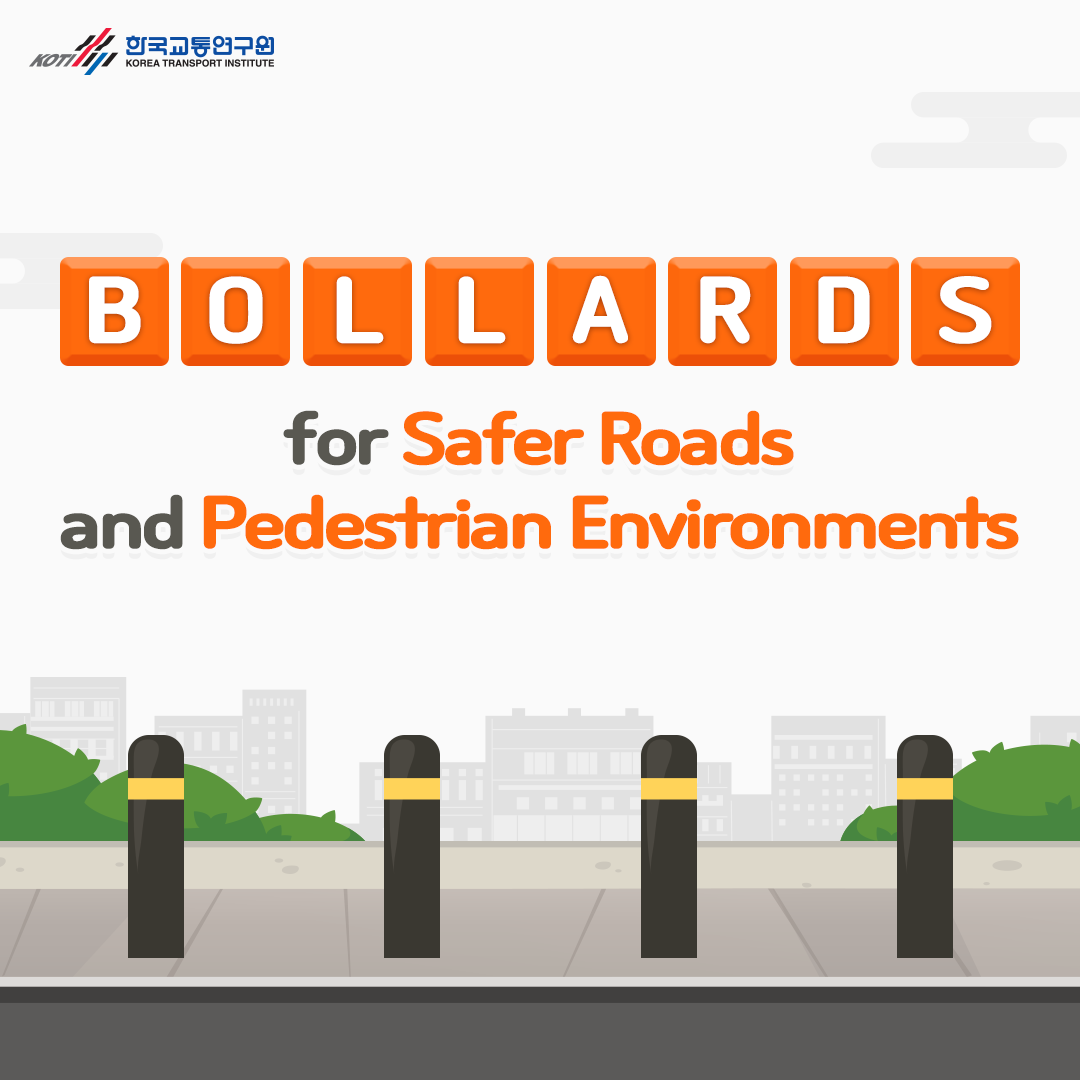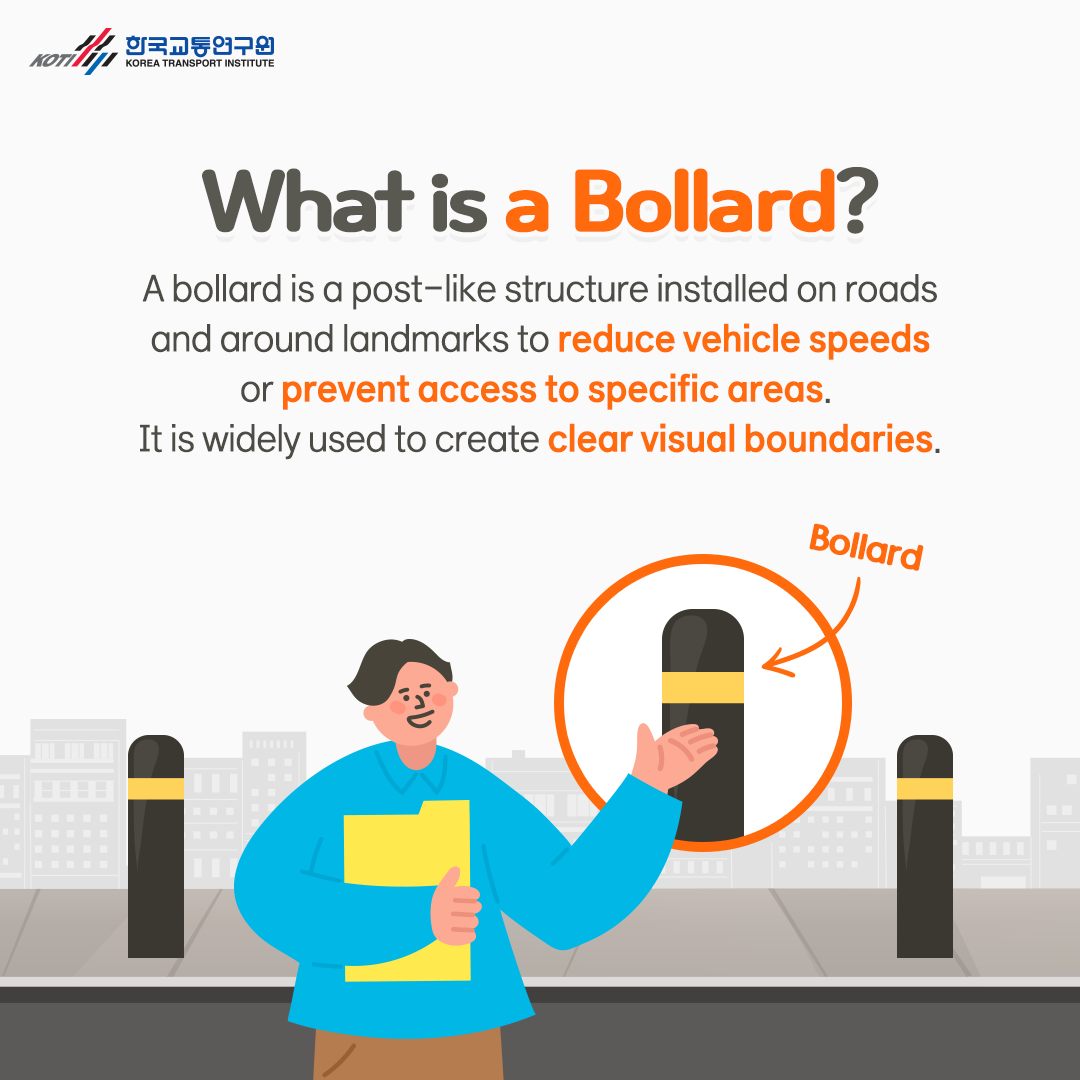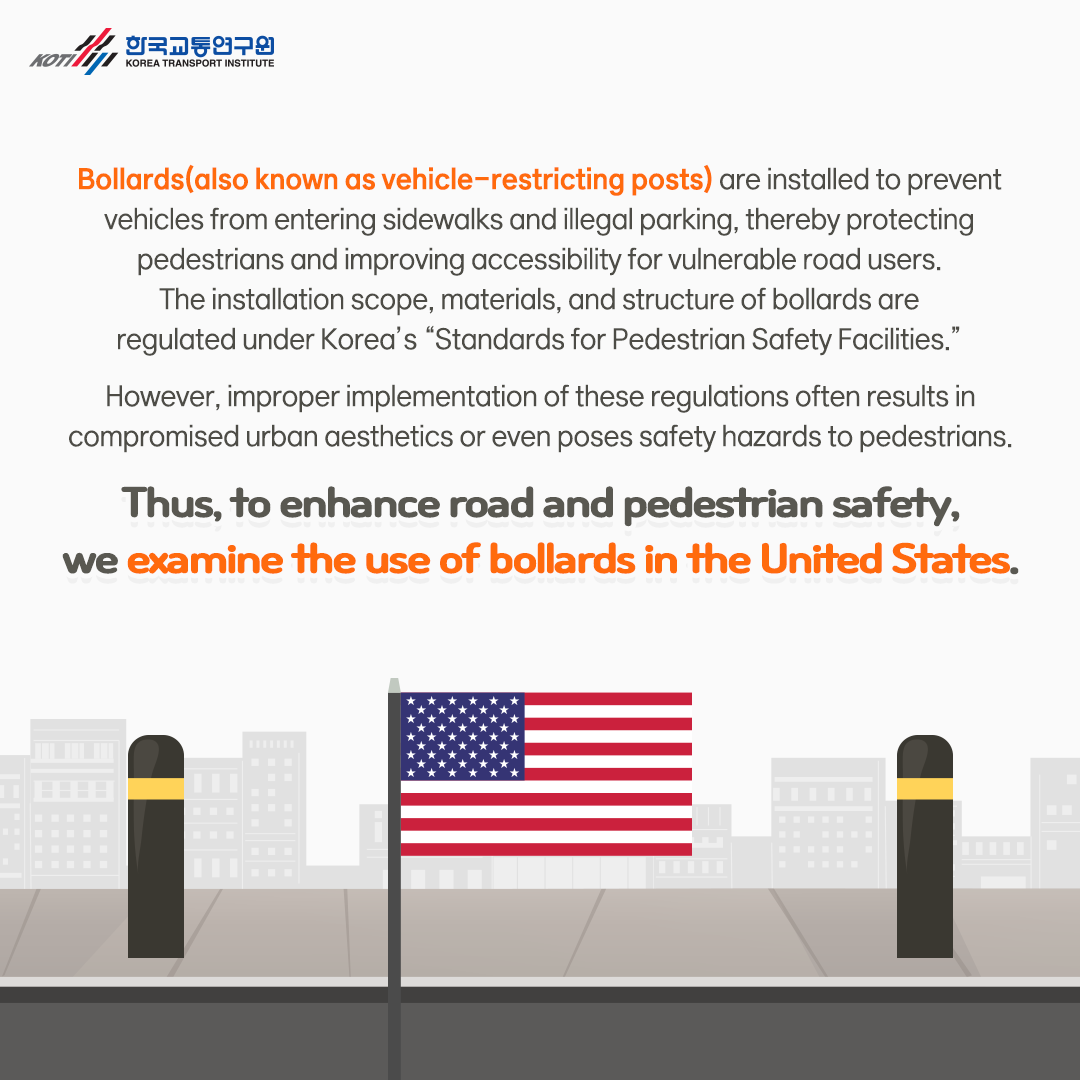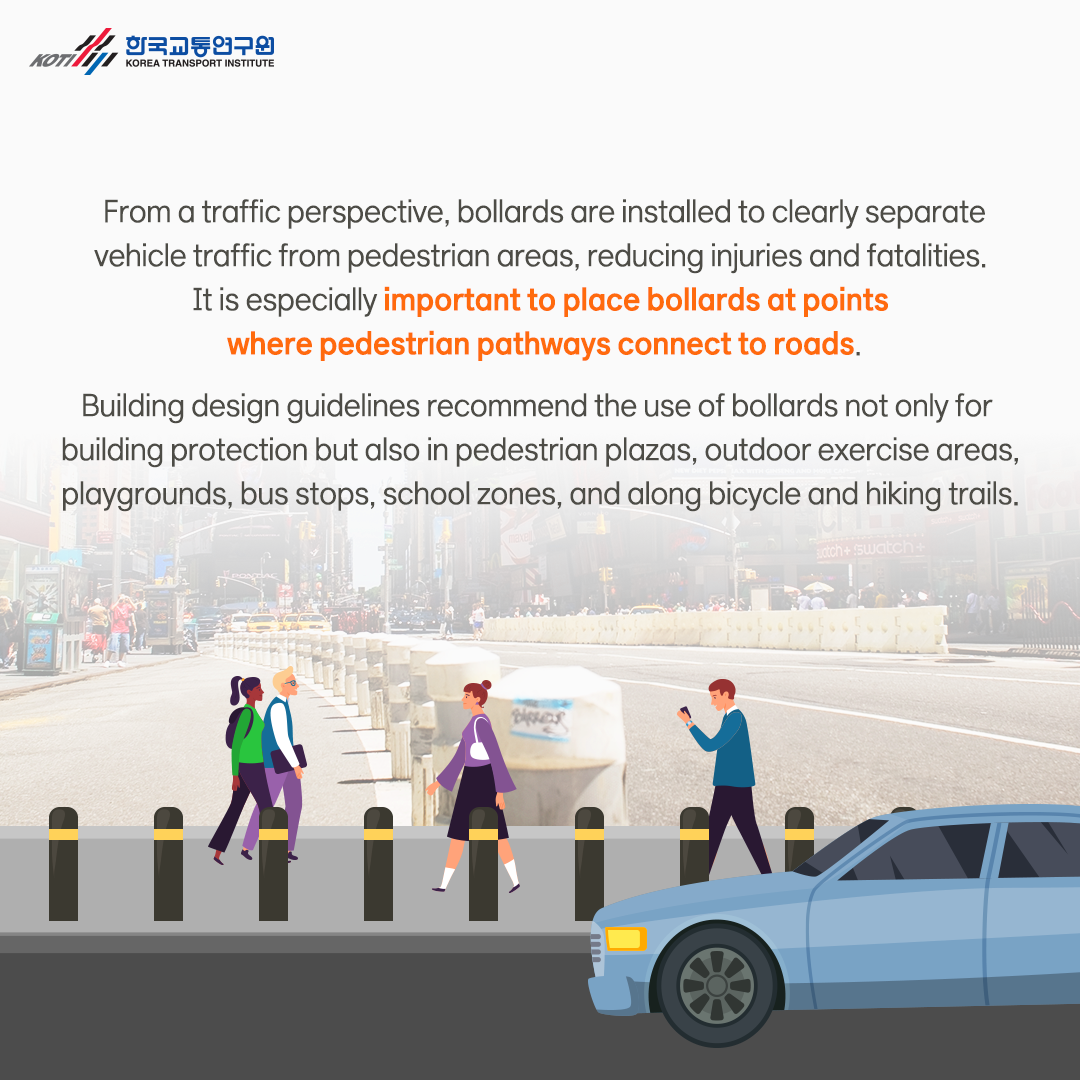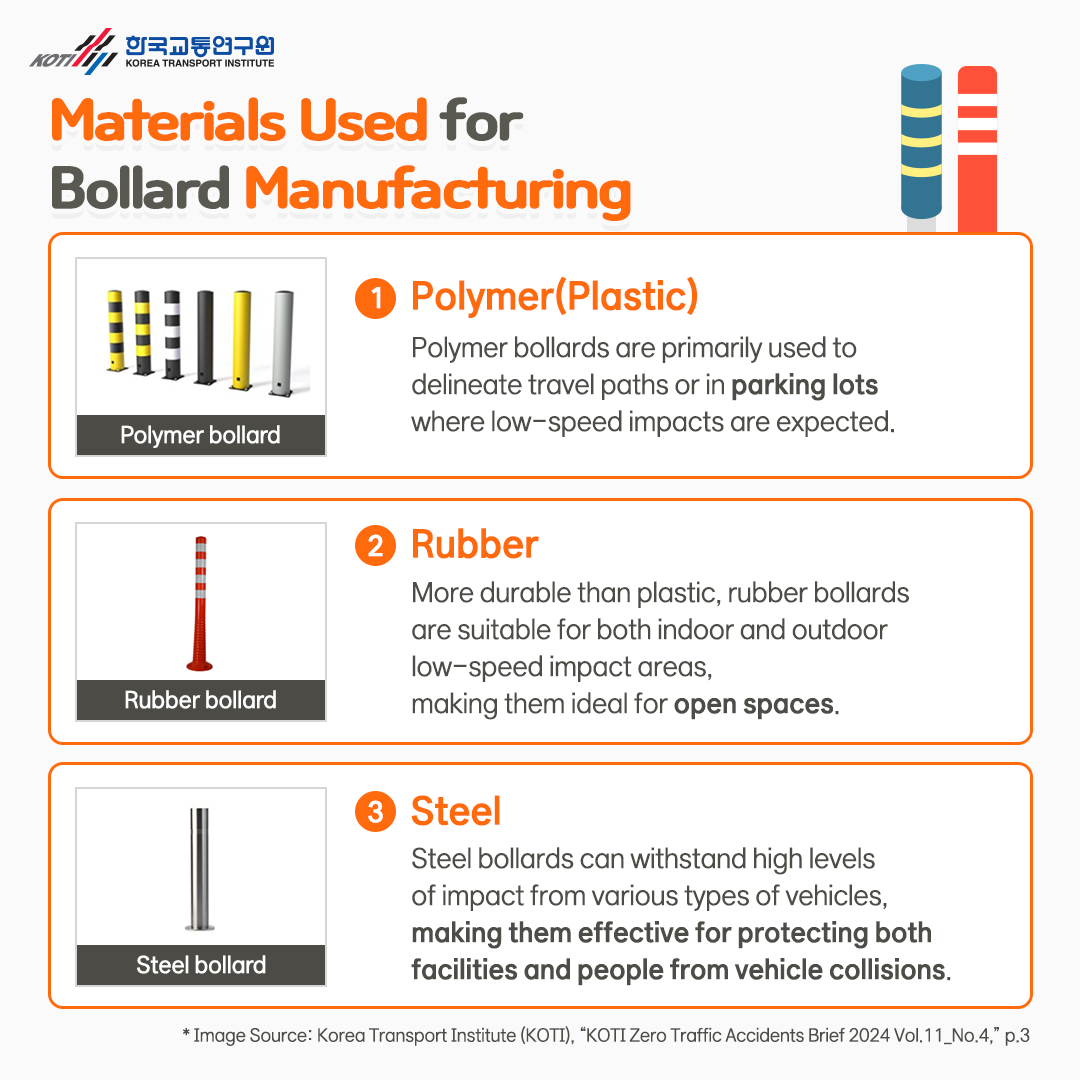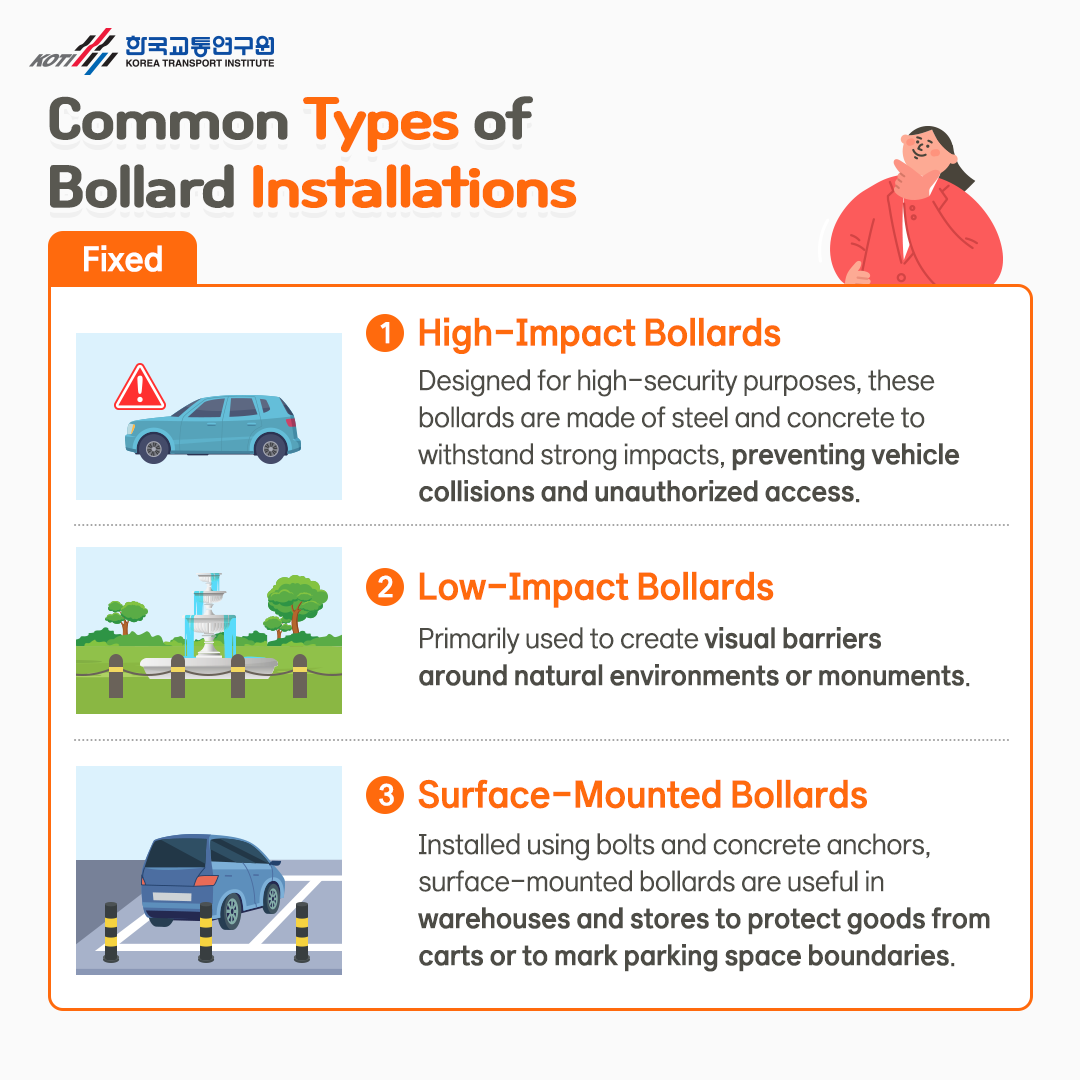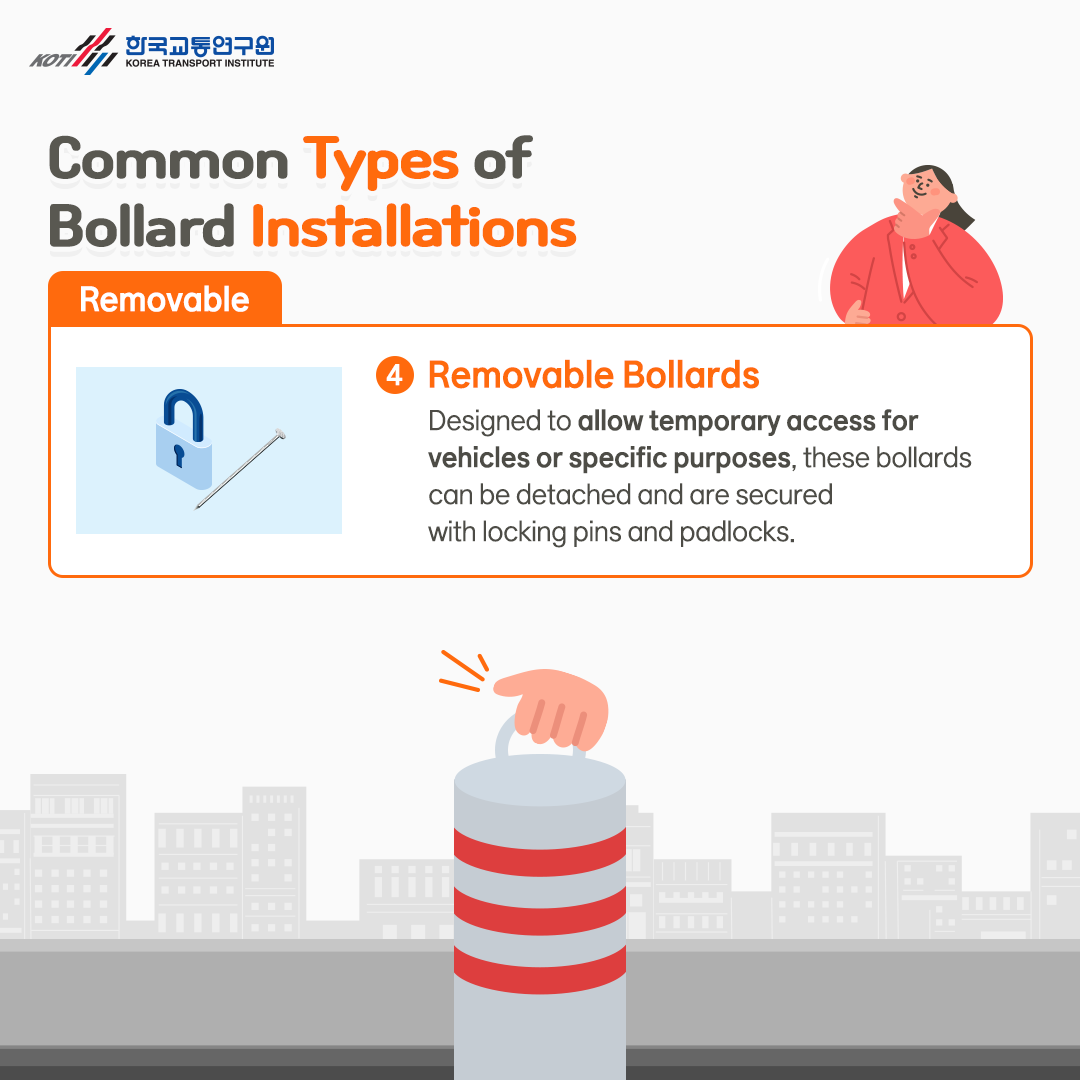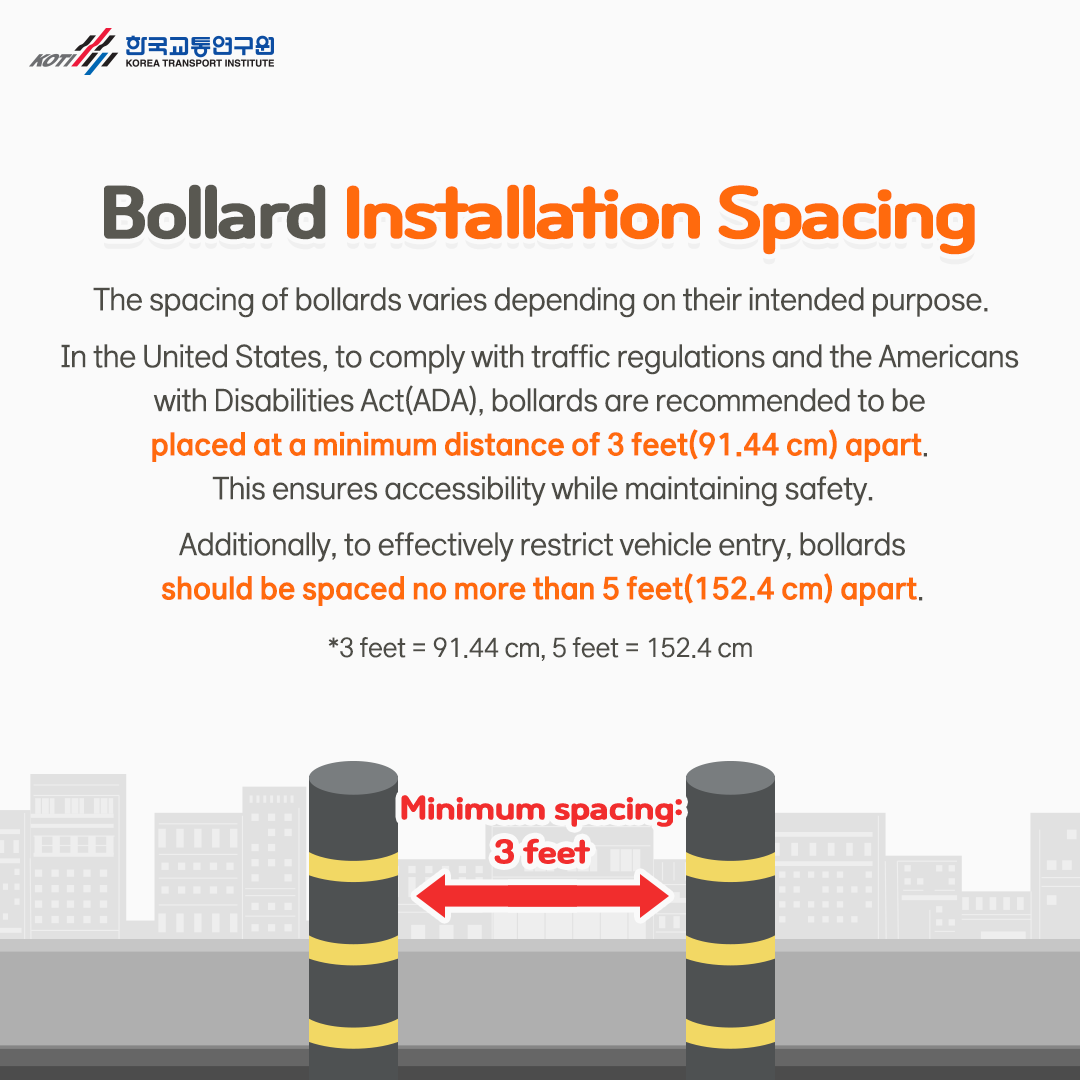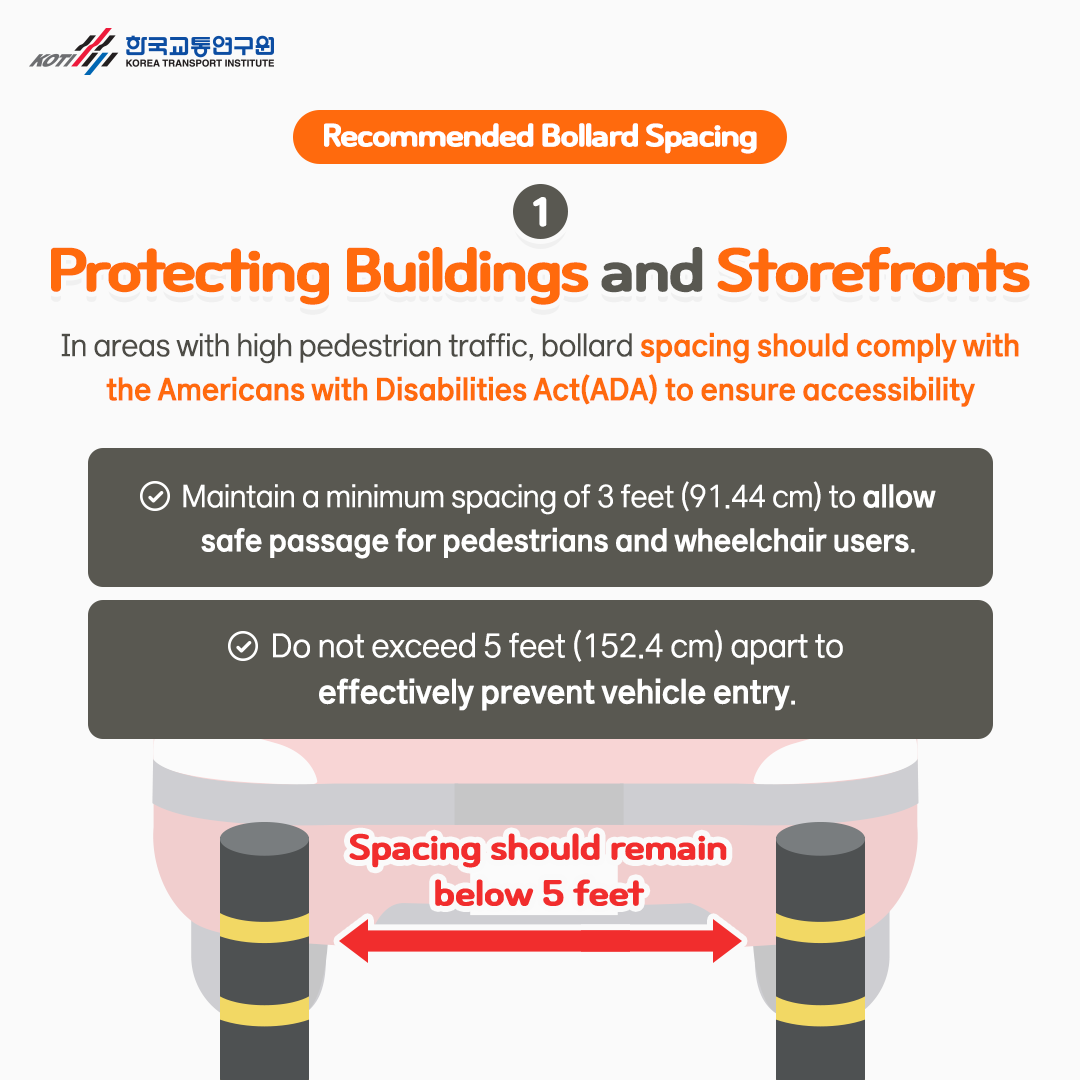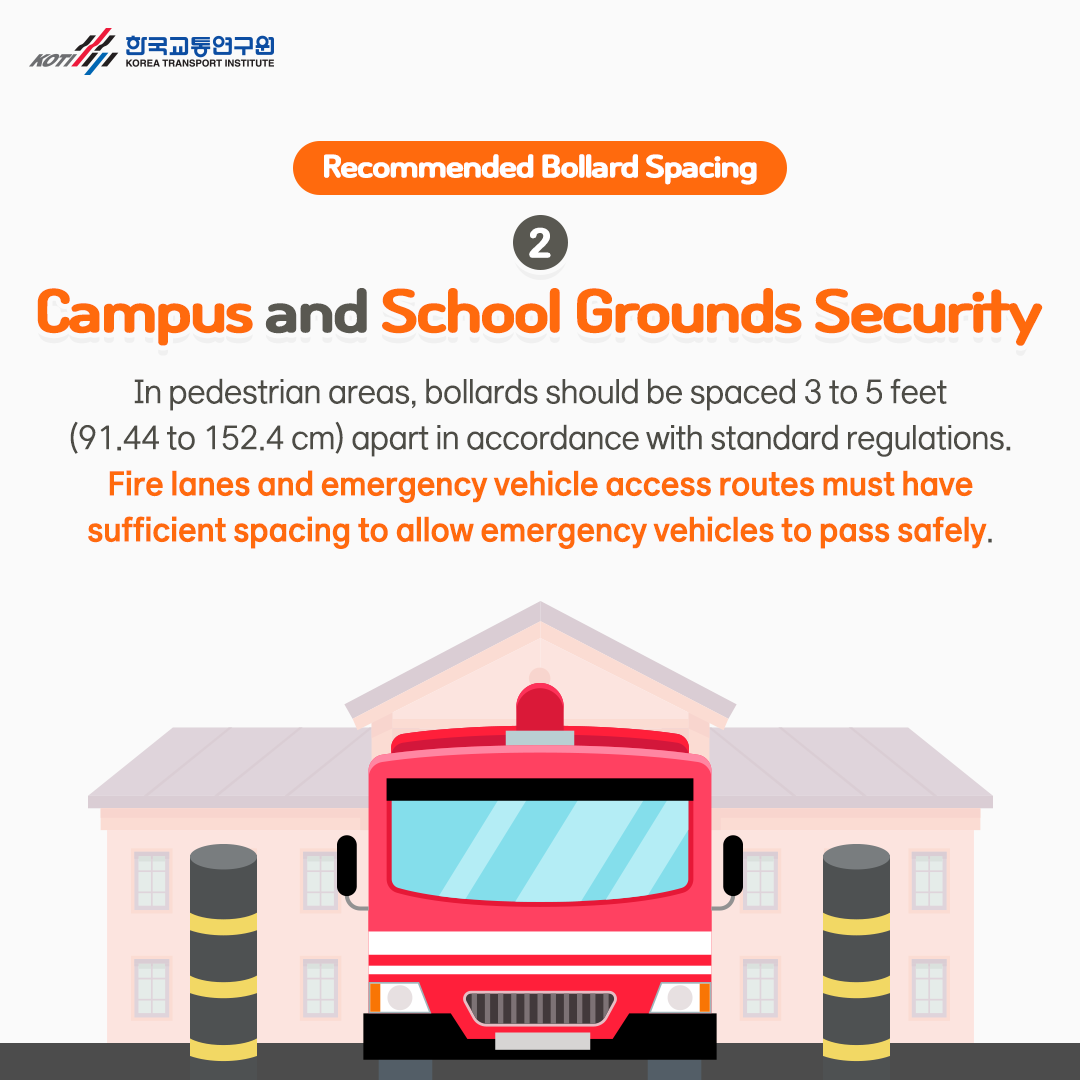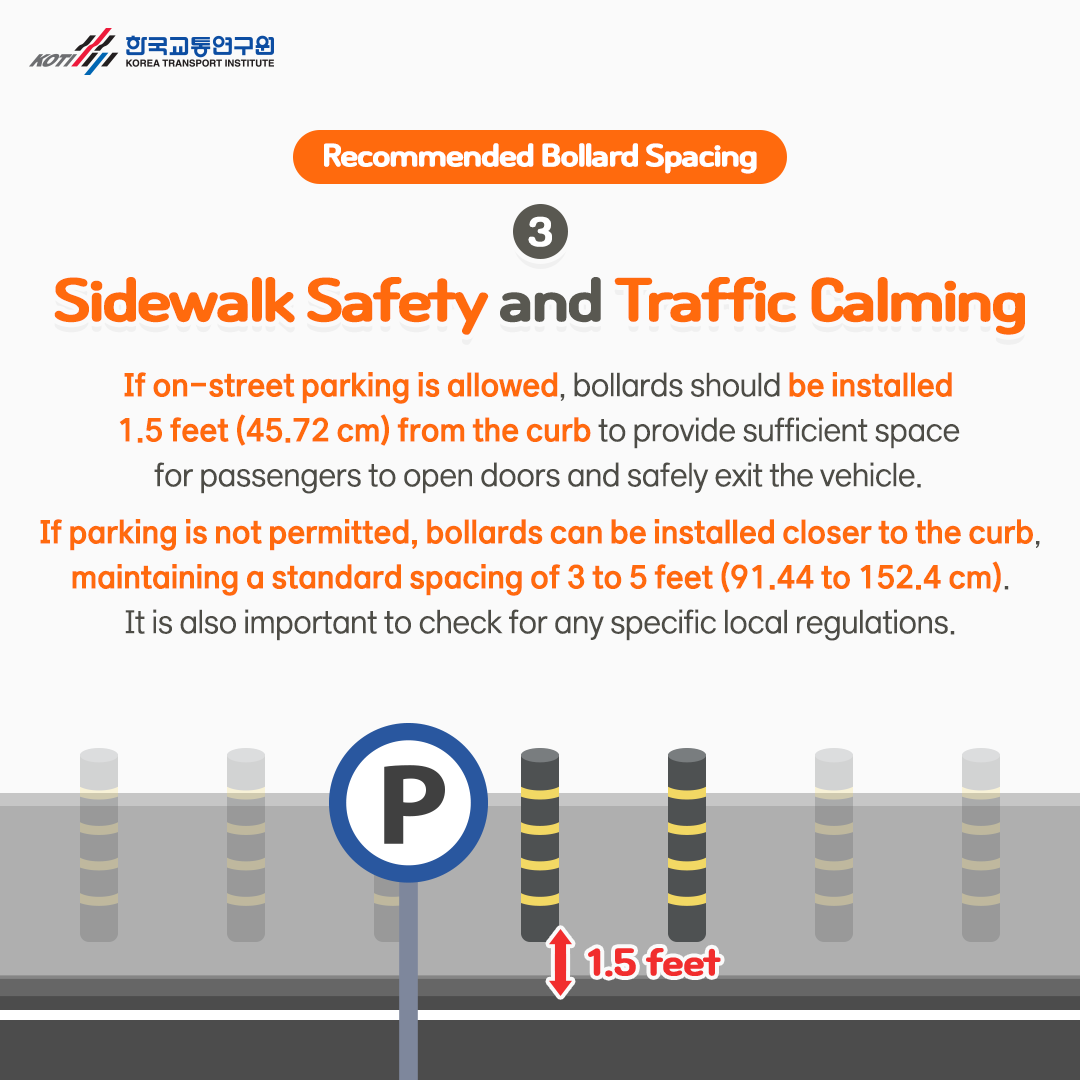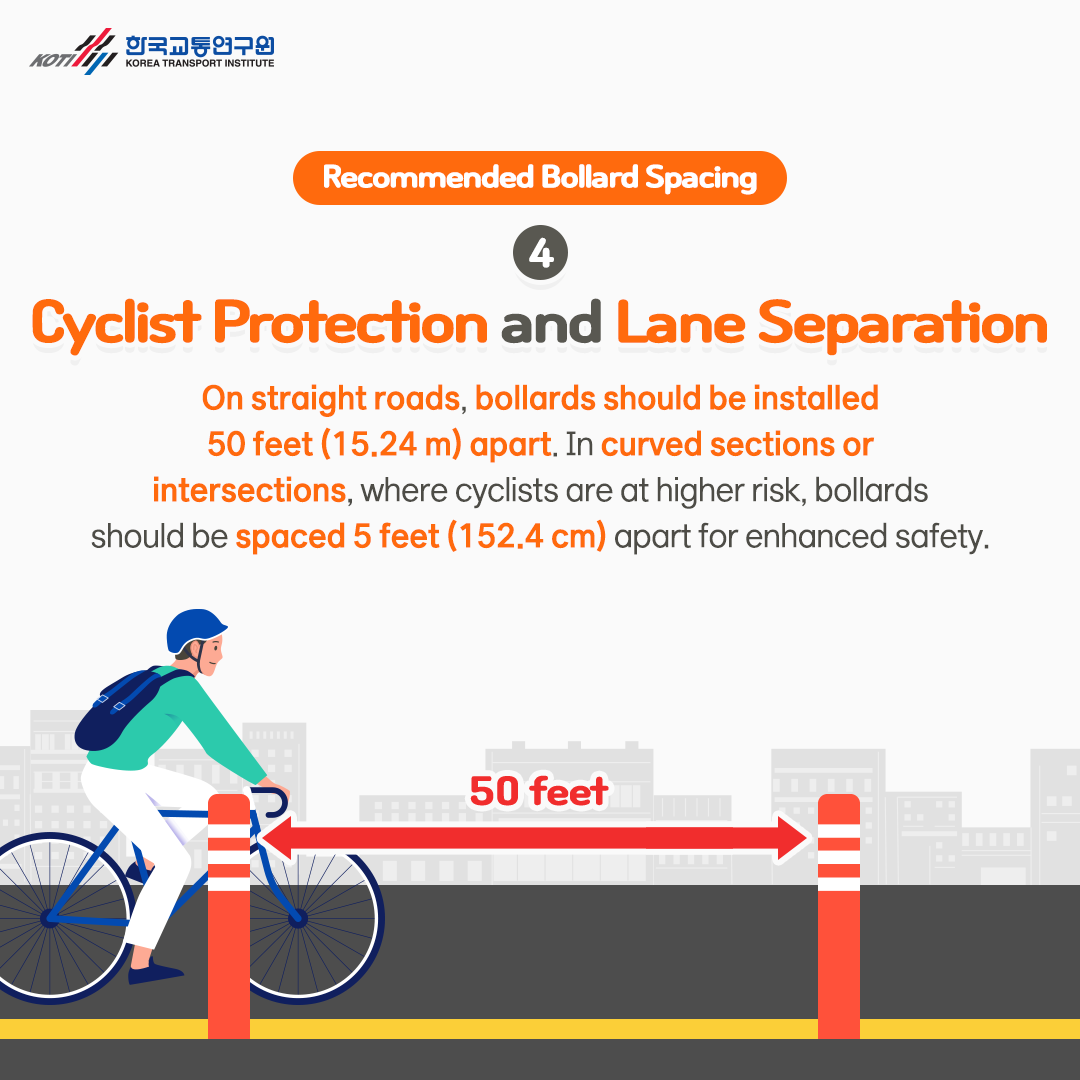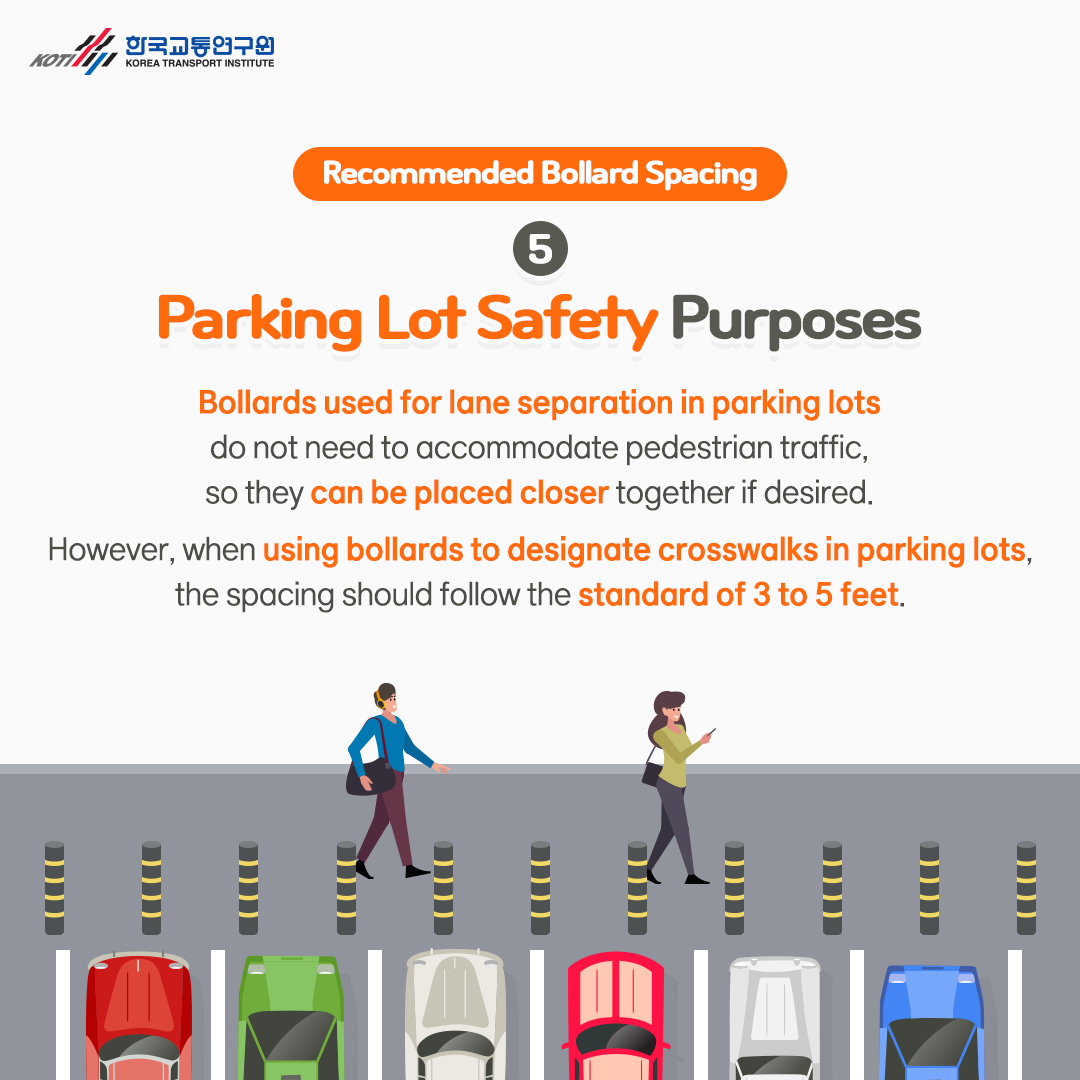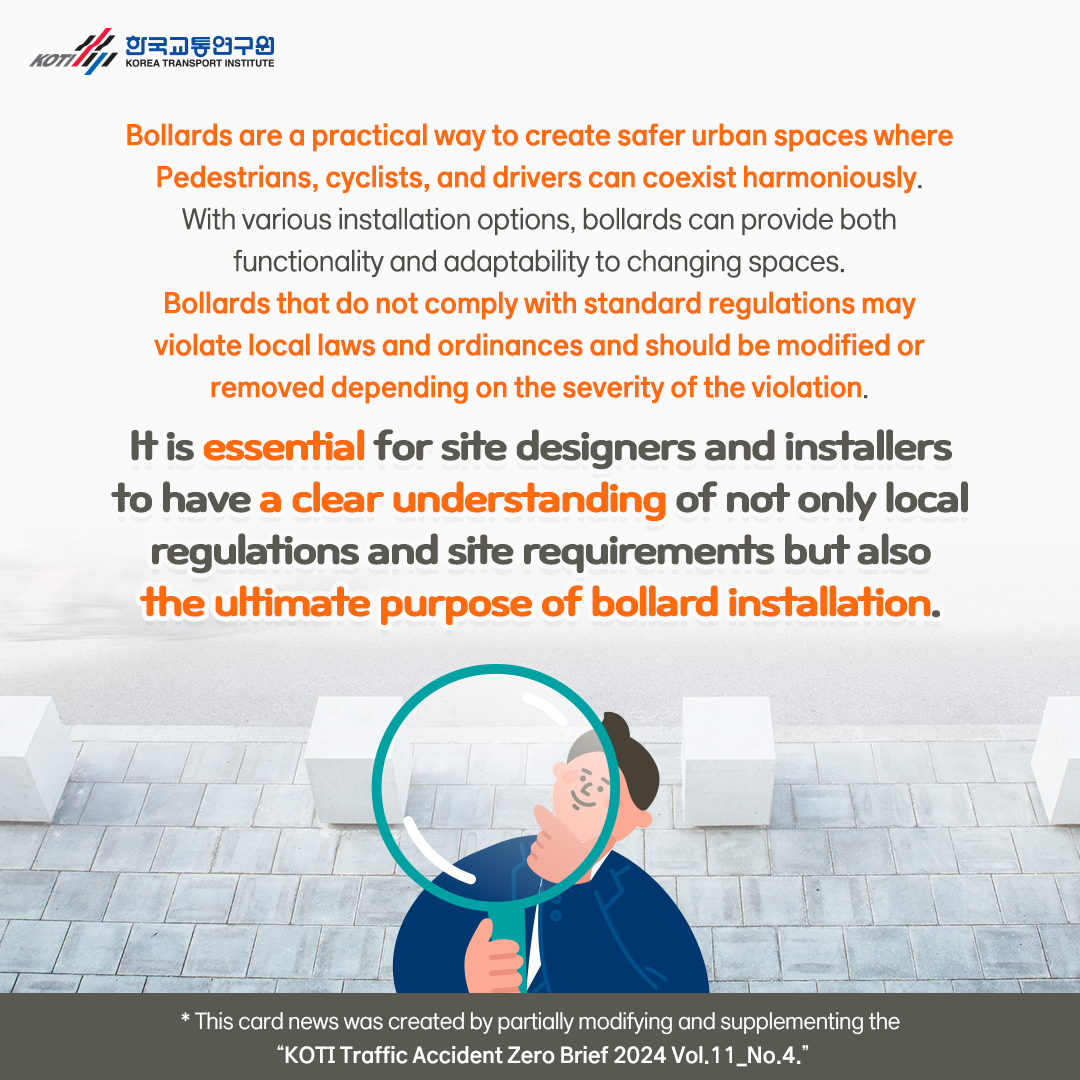Card News

NEWS
KOTI - Korea Transport institute
Feeds and Updates
Bollards for Safer Roads and Pedestrian Environments
February 21 2025
-
Bollards for Safer Roads and Pedestrian Environments
What is a Bollard? A bollard is a post-like structure installed on roads and around landmarks to reduce vehicle speeds or prevent access to specific areas. It is widely used to create clear visual boundaries.
Bollards (also known as vehicle-restricting posts) are installed to prevent vehicles from entering sidewalks and illegal parking, thereby protecting pedestrians and improving accessibility for vulnerable road users. The installation scope, materials, and structure of bollards are regulated under Korea’s "Standards for Pedestrian Safety Facilities."
However, improper implementation of these regulations often results in compromised urban aesthetics or even poses safety hazards to pedestrians.
Thus, to enhance road and pedestrian safety, we examine the use of bollards in the United States.
From a traffic perspective, bollards are installed to clearly separate vehicle traffic from pedestrian areas, reducing injuries and fatalities. It is especially important to place bollards at points where pedestrian pathways connect to roads.
Building design guidelines recommend the use of bollards not only for building protection but also in pedestrian plazas, outdoor exercise areas, playgrounds, bus stops, school zones, and along bicycle and hiking trails.
◆ Materials Used for Bollard Manufacturing
1. Polymer (Plastic) : Polymer bollards are primarily used to delineate travel paths or in parking lots where low-speed impacts are expected.
2. Rubber : More durable than plastic, rubber bollards are suitable for both indoor and outdoor low-speed impact areas, making them ideal for open spaces.
3. Steel : Steel bollards can withstand high levels of impact from various types of vehicles, making them effective for protecting both facilities and people from vehicle collisions.
◆ Common Types of Bollard Installations
1. Fixed Bollards - High-Impact Bollards : Designed for high-security purposes, these bollards are made of steel and concrete to withstand strong impacts, preventing vehicle collisions and unauthorized access.
2. Low-Impact Bollards : Primarily used to create visual barriers around natural environments or monuments.
3. Surface-Mounted Bollards : Installed using bolts and concrete anchors, surface-mounted bollards are useful in warehouses and stores to protect goods from carts or to mark parking space boundaries.
4. Removable Bollards : Designed to allow temporary access for vehicles or specific purposes, these bollards can be detached and are secured with locking pins and padlocks.
◆ Bollard Installation Spacing
The spacing of bollards varies depending on their intended purpose.
In the United States, to comply with traffic regulations and the Americans with Disabilities Act (ADA), bollards are recommended to be placed at a minimum distance of 3 feet (91.44 cm) apart. This ensures accessibility while maintaining safety.
Additionally, to effectively restrict vehicle entry, bollards should be spaced no more than 5 feet (152.4 cm) apart.
*3 feet = 91.44 cm, 5 feet = 152.4 cm / Minimum spacing: 3 feet
◆ Recommended Bollard Spacing
1. Protecting Buildings and Storefronts
In areas with high pedestrian traffic, bollard spacing should comply with the Americans with Disabilities Act (ADA) to ensure accessibility
• Maintain a minimum spacing of 3 feet (91.44 cm) to allow safe passage for pedestrians and wheelchair users.
• Do not exceed 5 feet (152.4 cm) apart to effectively prevent vehicle entry.
Spacing should remain below 5 feet.
2. Campus and School Grounds Security
In pedestrian areas, bollards should be spaced 3 to 5 feet (91.44 to 152.4 cm) apart in accordance with standard regulations. Fire lanes and emergency vehicle access routes must have sufficient spacing to allow emergency vehicles to pass safely.
3. Sidewalk Safety and Traffic Calming
If on-street parking is allowed, bollards should be installed 1.5 feet (45.72 cm) from the curb to provide sufficient space for passengers to open doors and safely exit the vehicle.
If parking is not permitted, bollards can be installed closer to the curb, maintaining a standard spacing of 3 to 5 feet (91.44 to 152.4 cm). It is also important to check for any specific local regulations.
4. Cyclist Protection and Lane Separation
On straight roads, bollards should be installed 50 feet (15.24 m) apart.
In curved sections or intersections, where cyclists are at higher risk, bollards should be spaced 5 feet (152.4 cm) apart for enhanced safety.
5. Parking Lot Safety Purposes
Bollards used for lane separation in parking lots do not need to accommodate pedestrian traffic, so they can be placed closer together if desired.
However, when using bollards to designate crosswalks in parking lots, the spacing should follow the standard of 3 to 5 feet.
Bollards are a practical way to create safer urban spaces where pedestrians, cyclists, and drivers can coexist harmoniously.
With various installation options, bollards can provide both functionality and adaptability to changing spaces.
Bollards that do not comply with standard regulations may violate local laws and ordinances and should be modified or removed depending on the severity of the violation.
It is essential for site designers and installers to have a clear understanding of not only local regulations and site requirements but also the ultimate purpose of bollard installation.
* This card news was created by partially modifying and supplementing the "KOTI Traffic Accident Zero Brief 2024 Vol.11_No.4
